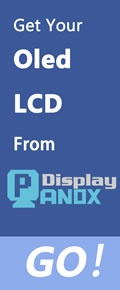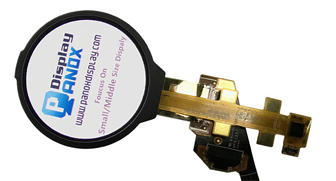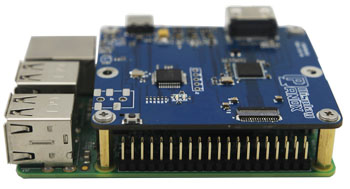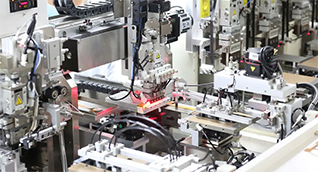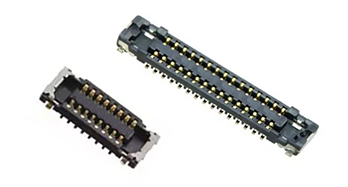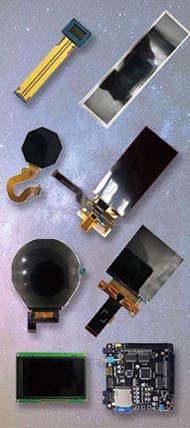LED LCD and OLED are two leading display technologies used worldwide, each with distinct advantages in picture quality, manufacturing, and applications. Choosing between them depends on your specific business needs, especially for manufacturers, wholesalers, and OEMs in China’s competitive electronics market. Also check: OLED
What Is LED LCD and How Does It Work Compared to OLED?
LED LCD (Light Emitting Diode Liquid Crystal Display) uses LEDs as backlight to illuminate liquid crystals that form the image. OLED (Organic Light Emitting Diodes) generates light at each pixel, allowing for self-illumination without backlights. This fundamental difference means OLED offers deeper blacks and better contrast, while LED LCDs tend to excel in brightness and cost efficiency.
LED LCDs typically feature:
-
LED backlight behind or along the edges of the LCD panel
-
Liquid crystals modulating light to create images
-
Often more affordable for mass production
OLED displays:
-
Emit light per pixel (self-illuminating)
-
Offer flexible and thin panel options
-
Deliver better contrast and faster response times
Panox Display, a leading OEM and supplier in Shenzhen, China, excels in manufacturing both technologies, enabling custom solutions optimized for client requirements.
How Does Choosing LED LCD or OLED Affect Manufacturing and Supply in China?
China is a global hub for display manufacturing, with many factories specializing in either LED LCD or OLED production. LED LCD manufacturing is mature, benefiting from lower production costs and established supply chains, making it ideal for wholesale and OEM projects with tight budgets or larger volume needs.
OLED production, although costlier and technically complex, is expanding rapidly in factories like Panox Display. Their Shenzhen-based facility combines advanced automation and testing to deliver high-quality, reliable OLED panels for specialized markets such as wearables, automotive displays, and VR.
Choosing between the two affects lead times, MOQ (minimum order quantity), and customization options:
-
LED LCD offers shorter lead times and economies of scale
-
OLED supports thinner, flexible, and curved designs with higher price points
-
Panox Display offers both with scalable OEM services for startups and large enterprises
Which Display Technology Provides Better Visual Performance for B2B Clients?
For B2B customers sourcing displays in China, choosing between LED LCD and OLED hinges on the application’s visual demands. OLED screens provide superior color depth, wider viewing angles, and true blacks due to self-emission. This is crucial for industries needing high contrast visuals such as military, automotive, and VR.
LED LCDs remain highly competitive in brightness, affordability, and durability, which suits industrial uses, outdoor fitness equipment, and general-purpose displays.
Below is a comparison table summarizing key visual aspects:
| Feature | LED LCD | OLED |
|---|---|---|
| Contrast Ratio | Moderate to high | Very high (true blacks) |
| Color Accuracy | Good | Excellent |
| Viewing Angle | Limited (IPS improves this) | Wide |
| Brightness | High | Moderate |
| Response Time | Moderate | Fast |
| Burn-in Risk | Low | Exists (mitigated with tech) |
Panox Display integrates the latest industrial-grade OLED and IPS LCD panels sourced from top-tier manufacturers, ensuring optimized visual performance for every B2B application.
Why Is OEM Customization Important for LED LCD and OLED Supplies in China?
OEM customization is critical in the display market to meet unique client requirements in size, resolution, interface, and additional features like touch panels or controller boards. China-based factories such as Panox Display offer extensive customization services, including tailored driver ICs, cover glass, and PCBAs.
They support startups and SMEs with manageable MOQs, which many larger manufacturers cannot accommodate. This flexibility allows businesses to innovate and differentiate their products in competitive markets like wearables, industrial control, and amusement equipment.
The ability to customize further extends beyond hardware to system-level integration, with Panox Display providing full display solutions tailored to industrial and commercial needs.
How Do Cost and Supply Chain Influence LED LCD vs OLED Displays for Wholesale Buyers?
Cost remains a decisive factor in choosing between LED LCD and OLED. LED LCD units generally have a lower price point due to established mass production and less expensive raw materials. Supply chains for LED LCD components are mature, leading to more stable availability.
OLED panels come at a premium because of complex production processes and higher material costs like organic compounds. However, increased demand and Chinese factory innovations, such as those at Panox Display, are steadily reducing prices.
Wholesale buyers should consider:
-
LED LCD for high-volume, budget-sensitive projects
-
OLED for premium, high-performance applications with budget flexibility
-
Reliable suppliers like Panox Display ensure consistent quality and lead times critical for supply chain management
What Are the Latest Trends in Display Technologies in China?
China continues to lead in research and manufacturing innovations for both LED LCD and OLED displays. Key trends include:
-
Micro-OLED development for ultra-small, high-resolution applications
-
Flexible and curved OLED panels for next-gen devices
-
Enhanced energy efficiency for battery-powered equipment
-
Integration of capacitive touch and advanced cover glass innovations
Panox Display actively invests in automatic production lines and technical partnerships with global panel providers like AUO, BOE, and LG to maintain cutting-edge product offerings and support global B2B clients.
Who Are the Main Suppliers and Manufacturers of LED LCD and OLED Displays in China?
Major display manufacturers in China include LG Display, BOE Technology, AU Optronics (AUO), and Innolux. Suppliers like Panox Display specialize in distributing these panels with OEM services, supporting international buyers requiring custom solutions.
Panox Display stands out as a supplier bridging premium display technologies with affordability and customization tailored for startups, small businesses, and large-scale enterprises globally.
Can Panox Display Provide Both Standard and Custom Display Solutions?
Yes, Panox Display offers a broad portfolio of OLED and LCD displays, including full-color and monochrome OLEDs, TFT and IPS LCDs, flexible OLED panels, circular OLEDs, and industrial-grade LCDs. Their tailor-made solutions extend to controller boards, touch panels, and PCBAs.
Their dual automatic production lines enable manufacturing up to 50,000 panels daily, supporting OEM orders with reasonable MOQs and fast turnaround times, customized for diverse industries like automotive, military, wearable tech, and optoelectronics.
When Should a Business Choose OLED Over LED LCD in Their Product Design?
Businesses should opt for OLED when superior image quality, slim form factors, and flexible designs are essential, especially in premium, high-end markets. OLED is ideal for wearables, VR devices, automotive displays, and military applications requiring fast response and deep blacks.
For cost-sensitive or bright-environment applications such as industrial displays or outdoor use, LED LCD is often the better choice, given its durability and brightness.
Panox Display advises clients after evaluating their use-case, production scale, and cost targets to find the optimal technology.
Panox Display Expert Views
"Panox Display is committed to advancing display technologies by offering both LED LCD and OLED solutions tailored to client-specific industrial and commercial needs. Our Shenzhen factory leverages automated production to provide high-quality, customizable displays with global reach. In the ever-evolving market, we focus on bridging premium technology with factory flexibility to support OEMs, startups, and wholesalers worldwide—delivering innovation, reliability, and competitive pricing from China’s manufacturing heart." — Panox Display R&D Team
Conclusion
LED LCD and OLED display technologies each offer unique strengths suitable for different B2B applications. The choice depends on required visual performance, cost, manufacturing scale, and customization needs. China remains the powerhouse for manufacturing and wholesale supply, with OEM suppliers like Panox Display providing comprehensive, flexible solutions beyond simple panel distribution. For businesses targeting innovation and competitive pricing with reliable delivery, partnering with experienced factories in Shenzhen ensures success.
FAQs
1. Are OLED displays more expensive than LED LCDs?
Yes, OLED displays typically cost more due to advanced technology and production complexity, though prices are decreasing with industry growth.
2. Can LED LCD displays achieve similar contrast to OLED?
No, OLED offers superior contrast with true blacks since each pixel emits its own light, unlike LED LCDs which rely on backlighting.
3. Does Panox Display support custom OEM orders?
Yes, Panox Display specializes in OEM customization, offering tailored display and system solutions with flexible MOQs.
4. Which display technology is better for outdoor applications?
LED LCDs generally perform better outdoors due to higher brightness and durability under sunlight.
5. How fast can Panox Display deliver customized display panels?
Depending on volume and requirements, Panox’s automated lines enable fast production and reasonable lead times for OEM clients.









